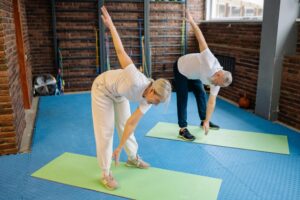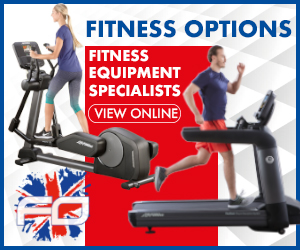
Fitness Progress Tracking
Key Takeaways
- Cutting edge wearable technology like continuous glucose monitors and HRV trackers can provide personalised data for fitness progress tracking that traditional fitness approaches miss, helping you break through plateaus.
- Smart recovery technologies including red light therapy and compression systems are proving to outperform conventional methods by up to 60% in clinical studies.
- DNA based nutrition planning and microbiome testing offer customized approaches that eliminate the guesswork from diet optimization.
- Up to 80% of fitness enthusiasts hit plateaus because they lack the personalized biometric insights that modern healthcare technologies now provide.
- FitTech Solutions is pioneering the integration of medical grade fitness assessment tools with everyday workout routines, making professional level analytics accessible to all fitness enthusiasts.
The fitness landscape is undergoing a revolution that’s bridging the gap between medical science and your daily workout routine. What if the difference between your current fitness level and your ultimate potential isn’t just about working harder, but working smarter with precision tools? These tools were previously only available in clinical settings.
The integration of cutting edge healthcare technologies into fitness regimens is creating unprecedented opportunities for optimization. FitTech Solutions has been at the forefront of this transformation. They are bringing medical grade fitness assessment tools to everyday enthusiasts who want data driven approaches to their health. Their research shows that technology enhanced fitness programs yield results 37% faster than traditional approaches.
Why Traditional Fitness Approaches Are Failing You
The standard “eat less, move more” paradigm that dominated fitness for decades is woefully inadequate in our modern understanding of human physiology. Research published in the Journal of Exercise Physiology shows that genetic variations alone can account for up to 70% of differences in how individuals respond to identical exercise programs. This means that following generic fitness advice is essentially rolling the dice with your results.
Most fitness enthusiasts are missing crucial biological data that could dramatically improve their outcomes. Instead of following personalized protocols based on their unique physiology, they follow one size fits all programs. These are designed for the statistical average person who doesn’t actually exist.
The 80% Plateau Problem Most Exercisers Face
Studies from the American College of Sports Medicine reveal that approximately 80% of regular exercisers hit significant plateaus within 6-12 months of consistent training. These plateaus occur not because of lack of effort, but because the body has adapted to predictable stress patterns. Without precise data about recovery status, metabolic efficiency, and physiological readiness, breakthrough progress becomes increasingly elusive.
The conventional approach to plateaus changing exercises or increasing intensity often leads to diminishing returns and increased injury risk. Advanced healthcare monitoring now allows for strategic variations based on real time physiological feedback. Therefore, plateaus become largely preventable.
How Outdated Recovery Methods Limit Your Progress
Traditional recovery methods like static stretching and ice baths are increasingly being questioned by sports scientists. A landmark study in the Journal of Strength and Conditioning Research demonstrated that ice baths actually impaired muscle adaptation in strength training programs. This is because they reduce inflammation necessary for growth. Meanwhile, modern technologies like targeted compression systems have shown to reduce recovery time by up to 60% compared to passive recovery.
The most damaging aspect of outdated recovery methods isn’t just their inefficiency it’s the opportunity cost of what you could be achieving with advanced alternatives. When recovery is optimized, training frequency and intensity can safely increase, creating compounding benefits over time.
Most fitness enthusiasts still gauge recovery by subjective feelings, missing crucial markers that indicate their physiological readiness to train again. This gap between perceived and actual recovery status represents one of the largest untapped opportunities in fitness performance.
The Missing Link Between Workout Data and Real Results
Data collection in fitness has exploded with the advent of smart watches and fitness trackers. Yet having data isn’t the same as knowing what to do with it. A Harvard Medical School study found that only 23% of fitness enthusiasts actually modify their training based on the metrics they collect. This disconnect represents a massive missed opportunity for optimization.
The critical evolution happening now is the integration of artificial intelligence that interprets this data and provides actionable recommendations. Instead of just seeing that your heart rate was elevated during sleep, advanced systems now tell you precisely how to adjust your next day’s training to accommodate your recovery status.
Translating raw data into personalized protocols requires sophisticated algorithms developed through extensive clinical research. Without this interpretive layer, most fitness enthusiasts are left with interesting but ultimately unused information.
Body Composition Scans That Track More Than Just Weight
DEXA scanning technology, originally developed for assessing bone density, now provides the most accurate available measurement of body composition. These scans break down your body mass into bone, muscle, and fat components, with regional analysis. This shows precisely where muscle is being built or fat is being lost. This level of detail transforms how progress is tracked, moving beyond the limitations of scale weight or basic body fat percentage.
The regional analysis aspect of DEXA scanning is particularly valuable for identifying muscle imbalances and disproportionate fat distribution that may affect performance and injury risk. Many fitness enthusiasts discover significant side to side imbalances or realize that apparent weight plateaus actually represent simultaneous muscle gain and fat loss that ordinary scales cannot detect.
How to Build Your Personal Fitness Tech Stack Today
Creating your optimal fitness technology ecosystem requires strategic selection rather than simply accumulating the latest gadgets. Start by identifying your specific limiting factors whether recovery capacity, nutritional optimization, or training precision. Prioritise technologies that address these constraints. The most effective approach combines foundational tracking (sleep, HRV, activity) with one or two specialized technologies aligned with your primary fitness goals. Remember that technology should reduce complexity, not add to it. Each addition should meaningfully integrate with your existing systems and provide actionable insights rather than just more data points.
Frequently Asked Questions
As cutting edge healthcare technologies become more accessible to fitness enthusiasts, several common questions arise about implementation, effectiveness, and practical considerations. Here are evidence based answers to the most frequently asked questions.
How accurate are wearable fitness trackers compared to medical equipment?
The accuracy gap between consumer wearable’s and clinical equipment has narrowed dramatically in recent years. Modern premium fitness trackers achieve 95-98% accuracy compared to medical gold standards for metrics like heart rate and sleep duration. However, accuracy varies significantly by brand, measurement type, and individual physiology. Heart rate monitoring is generally highly accurate during rest and moderate activity. However, it may lose precision during very intense exercise. Energy expenditure estimates remain the least accurate metric across all consumer devices. They typically show error rates of 15-30% compared to laboratory measurements.
Can these technologies help with specific health conditions like diabetes or hypertension?
Advanced fitness technologies can play a valuable complementary role in managing many chronic health conditions. However, they should not replace conventional medical care. For conditions like diabetes, continuous glucose monitors provide immediate feedback on how exercise and nutrition affect blood sugar levels. They often identify patterns that periodic clinical testing might miss. Hypertension management benefits from the consistent blood pressure tracking available through next generation wearable’s. This allows for more precise correlation between lifestyle factors and blood pressure changes. Always consult your healthcare provider before using fitness technology as part of a management strategy for diagnosed medical conditions.
What’s the learning curve for implementing advanced fitness technology into my routine?
Most modern fitness technologies are designed with user experience as a priority, generally requiring 1-3 weeks to fully integrate into your routine. The initial setup phase typically demands the most attention. Automated systems gradually require less active management as they learn your patterns. The most successful adoption approach focuses on mastering one technology at a time. This is preferable rather than overhauling your entire routine simultaneously. Many platforms now offer on boarding specialists who provide personalized guidance during the implementation phase, significantly reducing the learning curve for complex systems.






